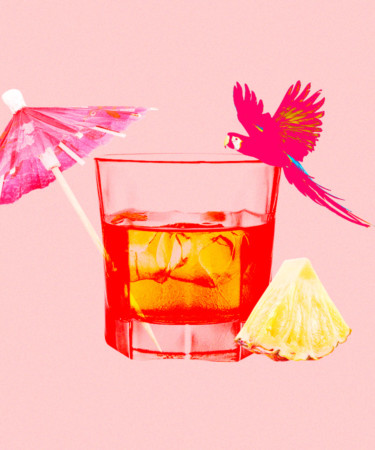For many drinkers, rum is regarded as a mysterious spirit. It comes in a variety of hues ranging from clear to caramel and dark brown molasses, and is most known for its use in dessert-like cocktails suitable for ocean views or poolside sipping. But there’s so much more to rum than meets the eye, and with recent celebrity endorsements and rising interest in reclaiming tiki-style drinks, Caribbean rum in particular is stepping into the spotlight.
The sugar cane-based spirit has island roots, making it a natural fit for tropical cocktails, but there are a lot of ways to enjoy rum outside of vacation time. To answer that question, we chatted with Shannon Mustipher, a former brand ambassador for Denizen rum, one of the founders of the cocktail pop-up Women Who Tiki, and author of “Tiki: Modern Tropical Cocktails.”
Understanding Caribbean Rum
Although rum can be produced anywhere, some of the world’s best offerings hail from Caribbean Islands such as Jamaica, Trinidad, Guyana, and Barbados. Quintessentially tied to the culture and land, rum is distilled from the sugar cane plants that grow on the islands, and, unlike bourbon or whiskey, has little to no production regulations. In the Caribbean, rum is made utilizing column stills or pot distillation, a method that is strongly associated with Jamaican rums and can be aged in barrels that create unique flavor profiles. Though column stills are popular for their efficiency, pot stills are championed as a slower method that retains more flavor.
How to approach rum as a newbie
Mustipher suggests looking at rum similar to the way most of us view wine. She uses regional discretion and has often curated rum lists to mirror wine lists. Rum is incredibly diverse and much like wine can have distinct flavors produced by the terroir of the region it comes from. Viewing a rum in this fashion can not only help you understand the flavor profiles but also allow you to appreciate the complexity of the spirit.
The simplest rum cocktail
It’s the mixture of rum, lime juice, and simple syrup that makes a classic Daiquiri the easiest
way to utilize the spirit in a cocktail. Mustipher’s method for a simple Daiquiri uses grain sugar instead of simple syrup. First add the sugar, then the lime juice, and allow the sugar to dissolve in the juice before adding the rum. “This method makes a drier, crisper version of the Daiquiri as opposed to using a simple syrup, which can make the drink a little too weighty and doesn’t allow the rum to shine,” she notes.
As most bars are well stocked with these three ingredients, despite the rising costs of limes these days, a classic Daiquiri is a good way to evaluate the specific tastes of different rums. “Befriending a bartender always helps,” says Mustipher. A good bartender who knows rum can help guide your selection in order to make a daiquiri that suits your preference. Mustipher also points out that the simplicity of the daiquiri can predict how the rum will taste neat and how it will fare in cocktails like the Dark ‘n Stormy and Painkiller.
How to sip it neat or on the rocks
Much like whiskey, the taste of rum can range from smoky, sweet, spiced, to grassy. That said, it can also be sipped in a similar fashion, either neat or on the rocks to showcase all its interesting notes. To determine which rum best suits you, Mustipher advises analyzing your overall drinking preferences.
For example, if you enjoy American whiskey, then an English-style rum from Barbados might best fit your taste preferences as they are not overly sweet and tend to have familiar flavor elements like vanilla and oak. While those who enjoy Cognac may prefer French-style rum from Martinique, like rhum agricole, which is aged, generally a bit more aromatic, and drinks similarly to Cognac.
It’s also important to remember that the ABV of rum can be as varying as its tastes. Depending on the style of rum, the ABV can range from 20 percent to 75.5 percent, so opting to enjoy it over ice or with a splash of water can be helpful when sipping rum neat.
How to navigate rum classifications
There are categorizations to avoid when it comes to rum, such as aging years and color-based names like light, dark, and black rum. “When most people hear ‘premium,’ they automatically think of a longer age expression and that’s a bit of a trap because there are no laws that stipulate age statements on bottles of rum,” Mustipher explains. Most bottles of rum are a blend of rums that can vary in age, so she suggests doing a bit of research before assuming that a higher number equates to a more “premium-quality” rum.
